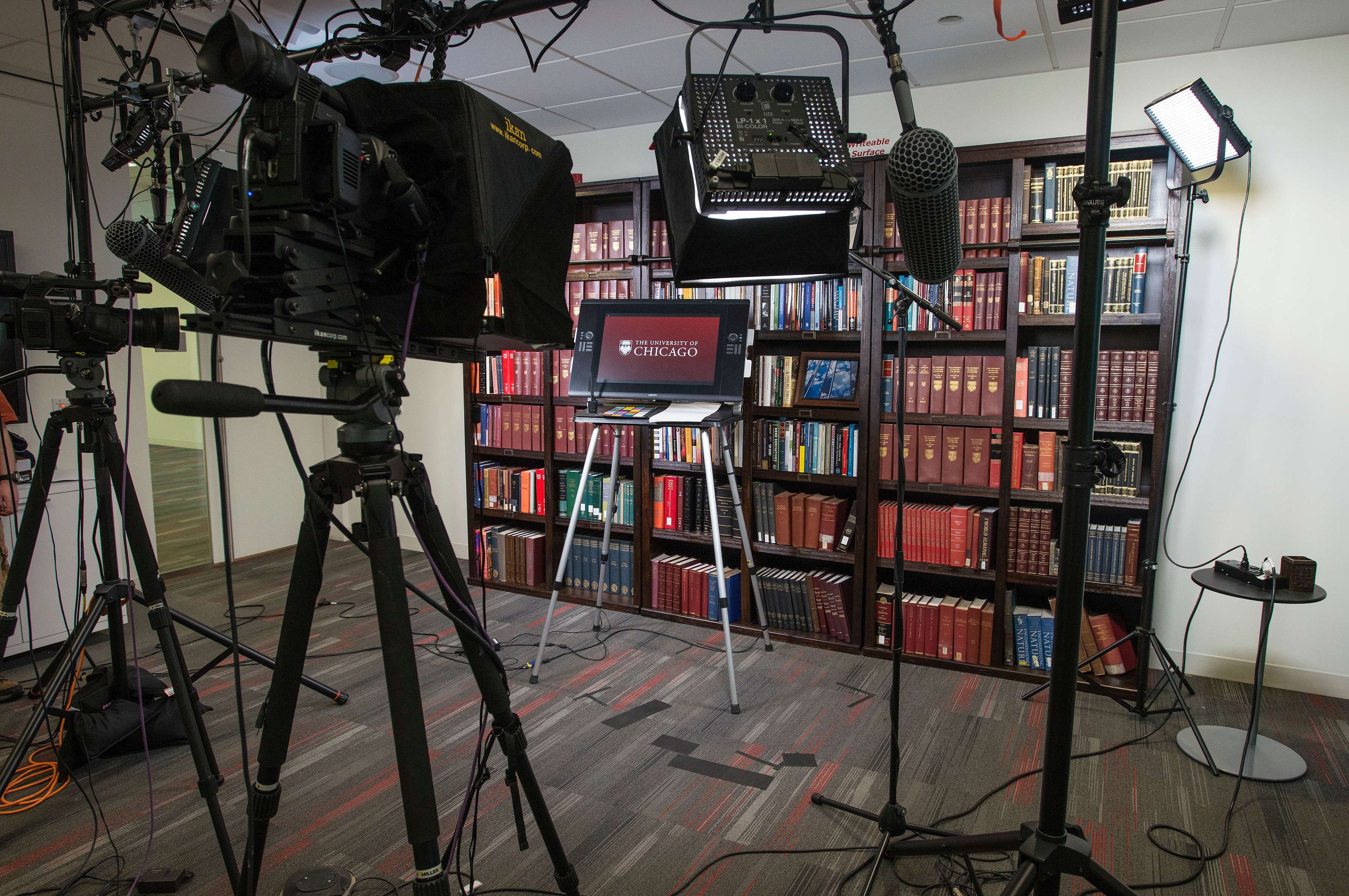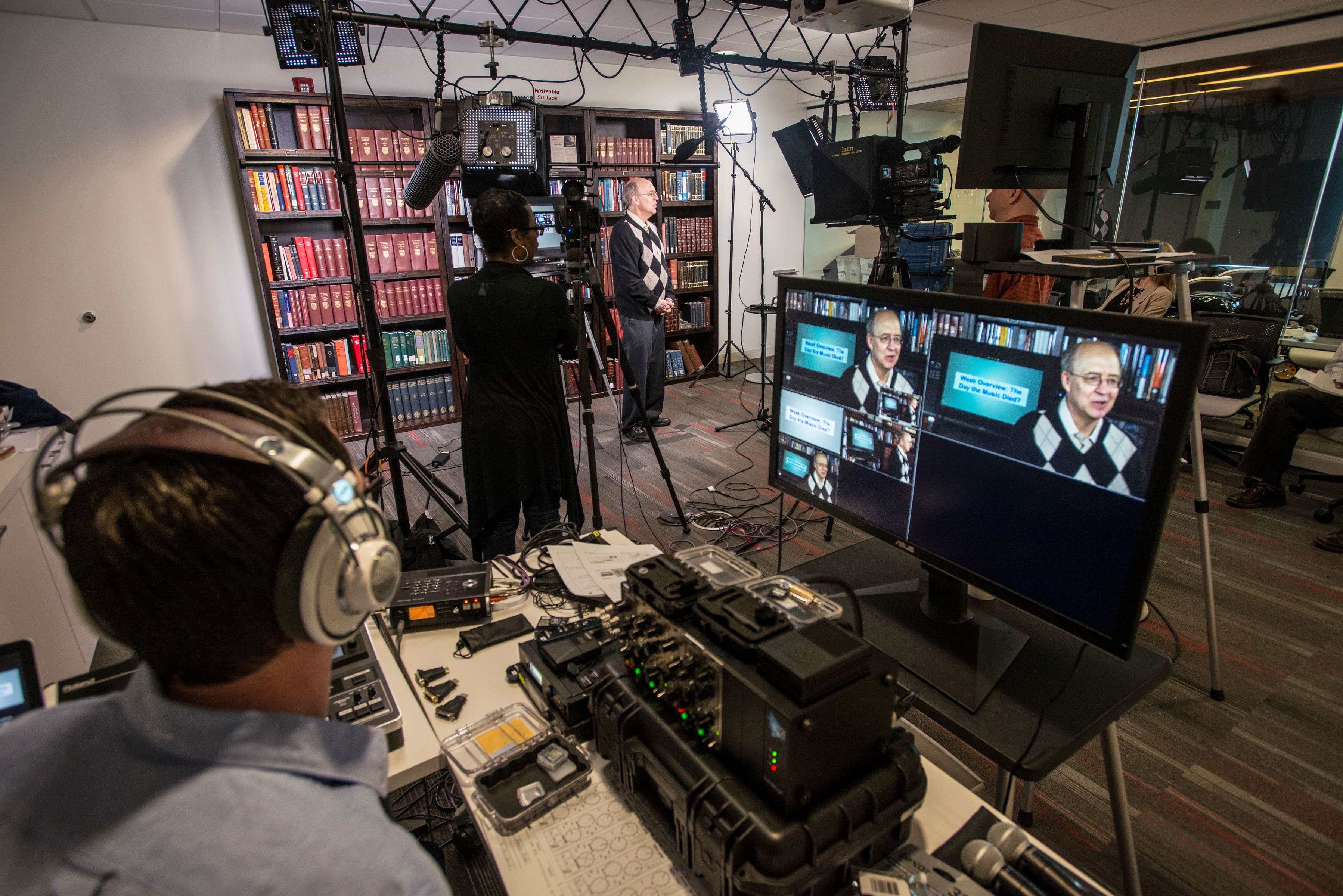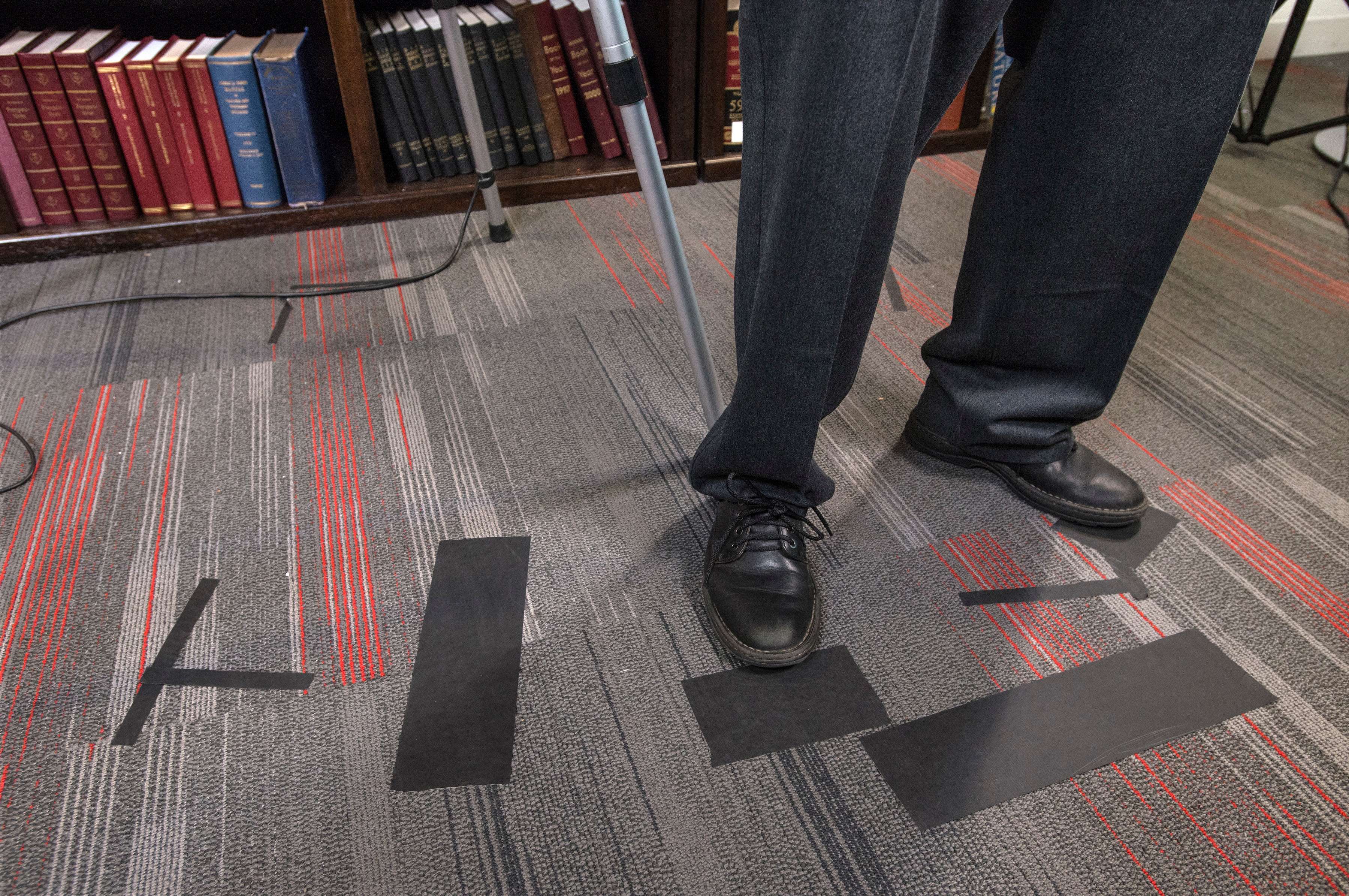The Volokh Conspiracy
Mostly law professors | Sometimes contrarian | Often libertarian | Always independent
Shooting a MOOC

If all goes well, my new free online course, Internet Giants: The Law and Economics of Media Platforms, will go live today.
In May 2014, in a two-hour window one Sunday evening, I wrote a four-page proposal for the University of Chicago's online education committee, which I was serving on. I had chaired the university's intellectual property committee when the university started down the MOOC path, and doing a good job with that project had the inevitable consequence: I was appointed to the university's new committee on online education.
(Be warned: The first time you are asked to serve on a law school or university committee, you face an important and to-be-considered choice: Bungle the assignment and you will likely be free of administrative tasks going forward, but the natural consequence follows if you do the task well. That said, it is really important that responsible souls do this work.)
In that proposal, I set out the seven topics that I would ultimately end up doing in the online course as it is being released today. I didn't simply take one of the courses that I teach and move it online. Instead, I created a new course from selected topics in three other courses that I teach at Chicago: Antitrust, Network Industries (the regulation of natural monopoly, starting with the railroad and the telegraph and moving forward) and Copyright.
I thought this was a sensible organization for a course centered on the idea of platforms. Platforms, or more generally two-sided or multi-sited markets, are perhaps the most important idea in the past two decades in industrial organization and related areas such as antitrust economics. The concept is important because it matches a set of behaviors and set of practices that have come to be so central to our lives.
My guess is that if I offered this course at the University of Chicago Law School, it might attract no more than 20 to 25 students, much smaller than the courses that I usually teach. That might be an acceptable size for a seminar, but I want my seminars to be focused on what the students say and much, much less about what I have to say. But a platforms course might work well across institutions, as I doubt too many law schools offer a course in platform law.
Course approval in hand - I did exit the meeting while the committee considered the course - the question became much more practical: How do I build a course centered on video? Faced with that problem, I did what students do: I enrolled in a course, this one at Second City.
As you may know, much of modern American comedy can be traced to Second City and its predecessor theater, The Compass, and all of that started in Hyde Park with strong tries to the University of Chicago. Bernie Sahlins, AB '43, is one of the key names in that history.
The course was the first-ever offering of Introduction to Filmmaking, and it was taught by Jack Newell, independent filmmaker and head of Second City's efforts in TV, film and digital.
My chief concern in taking the course was the match between what Newell does and what we were planning. Newell has a well-regarded film short, "Typing," that runs 9:14, with three actors and a production crew of 54. Our plan was 10 hours of video with me and four production people (and that was off by half, as we ended up producing right at 20 hours of final video for the course). Newell produces exquisite morsels, while we were very much going to be making short-order hash.

Yet talking through a short film was perfect. Newell was able to share with us his storyboards, shot list and other key documents that are the standard tools of the trade for a film director/producer. We saw camera placement, lighting, audio, shot selection and editing.
I wasn't teaching the spring of 2015 and so the plan was to start shooting in April 2015. We were in pre-production all fall and winter. My goal was to show as many original artifacts in the course as possible. For law, those artifacts are statutes, court decisions, contracts and the like and all of those need to be shown and not just talked about. One thousand two-hundred thirteen PowerPoint slides later, we were ready to do just that.
We shot over 11 days, spending roughly 40 hours in the university studio (see the two pictures of this) to create 20 hours of video. We took second takes only a handful of times, once when I was less-than-perfect and other times when PowerPoint was a little finicky or we had some other technical problem. But in truth, we had very little of that, which I put down to good planning and great production people. We didn't always shoot the material in order, and that meant that I needed to keep a wardrobe list so that I didn't wear the smartphone sweater and shirt when we finished the net neutrality day.
But that still leaves the teaching, and teaching into the camera - two cameras actually - was a new experience. I was actually generating three video feeds as I was talking, one from each camera and a third from the PowerPoint capture board. My job was to choose which camera to focus on while I was talking and that would establish how we did the edits in post-production.
The other big issue was that I felt as though I was teaching into a vacuum. Although there were four other people in the room while I was talking - two camera operators, an audio person and a producer - I couldn't see any of them while I was talking. We did not have students in the room. That would have changed the structure of the production considerably, but also would have created different teaching opportunities.
But standing there by myself, I needed to try to remember to be the classroom me as much as possible. I think that I am reasonably funny in class and that is part of my class personality, but we will have to see whether that comes across on film. I also pace in class, but that was a no-no in front of the camera, as moving six inches forward wrecked our lighting set up (see the third picture with all of the duct tape on the ground to define my acceptable zone).

I don't know whether we have created "Citizen Kane" or "Ishtar." The scary thing is that "Ishtar" was created by talented people: the great Elaine May (of Nichols & May from the original Compass in Hyde Park) wrote and directed it, and the stars were Warren Beatty and Dustin Hoffman. Even enormously talented people can generate a widely panned film.
We launch today, and I hope that I am ready for my close-up. I will be back later this week to let you know how that has worked out.


Show Comments (0)